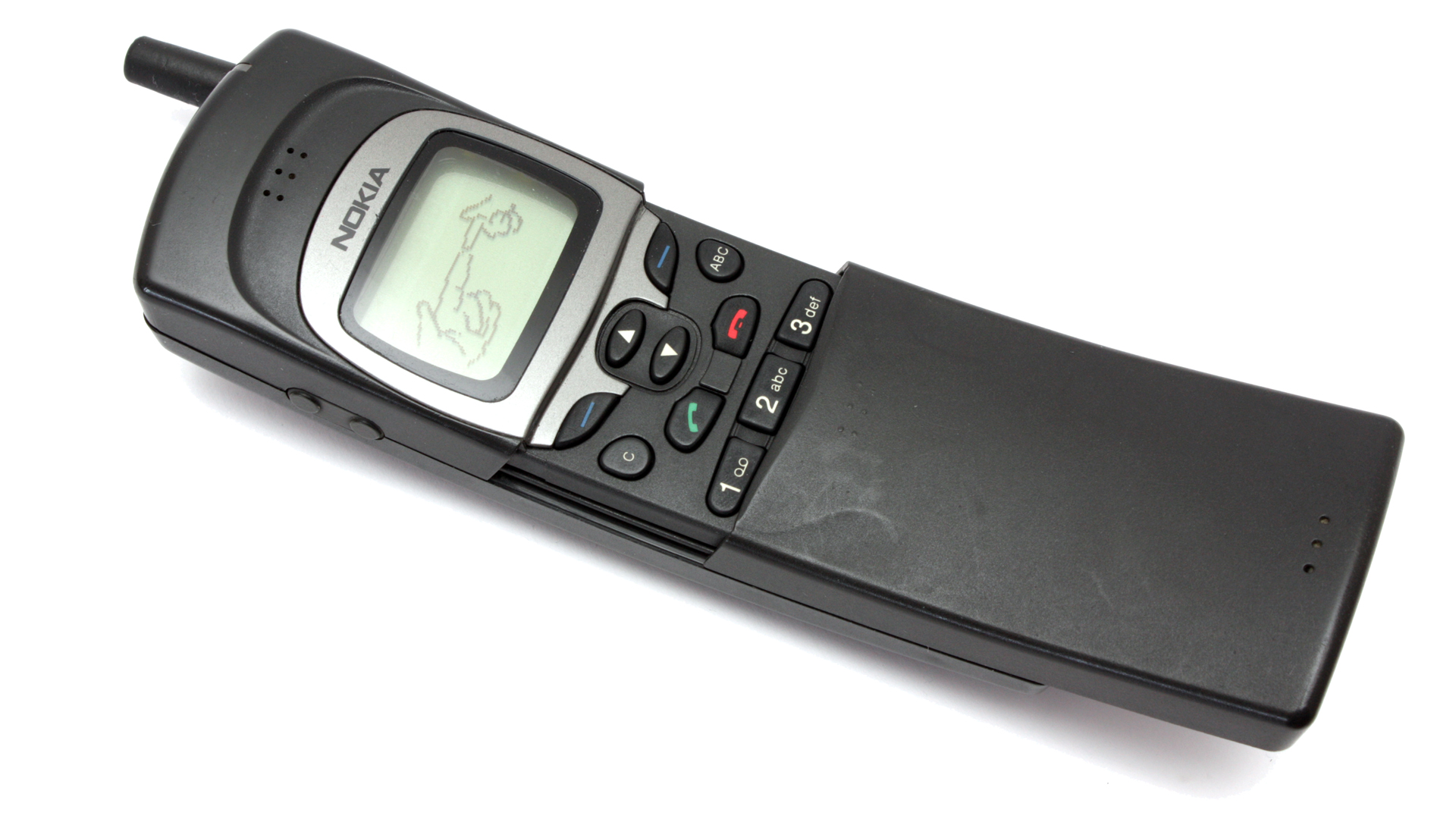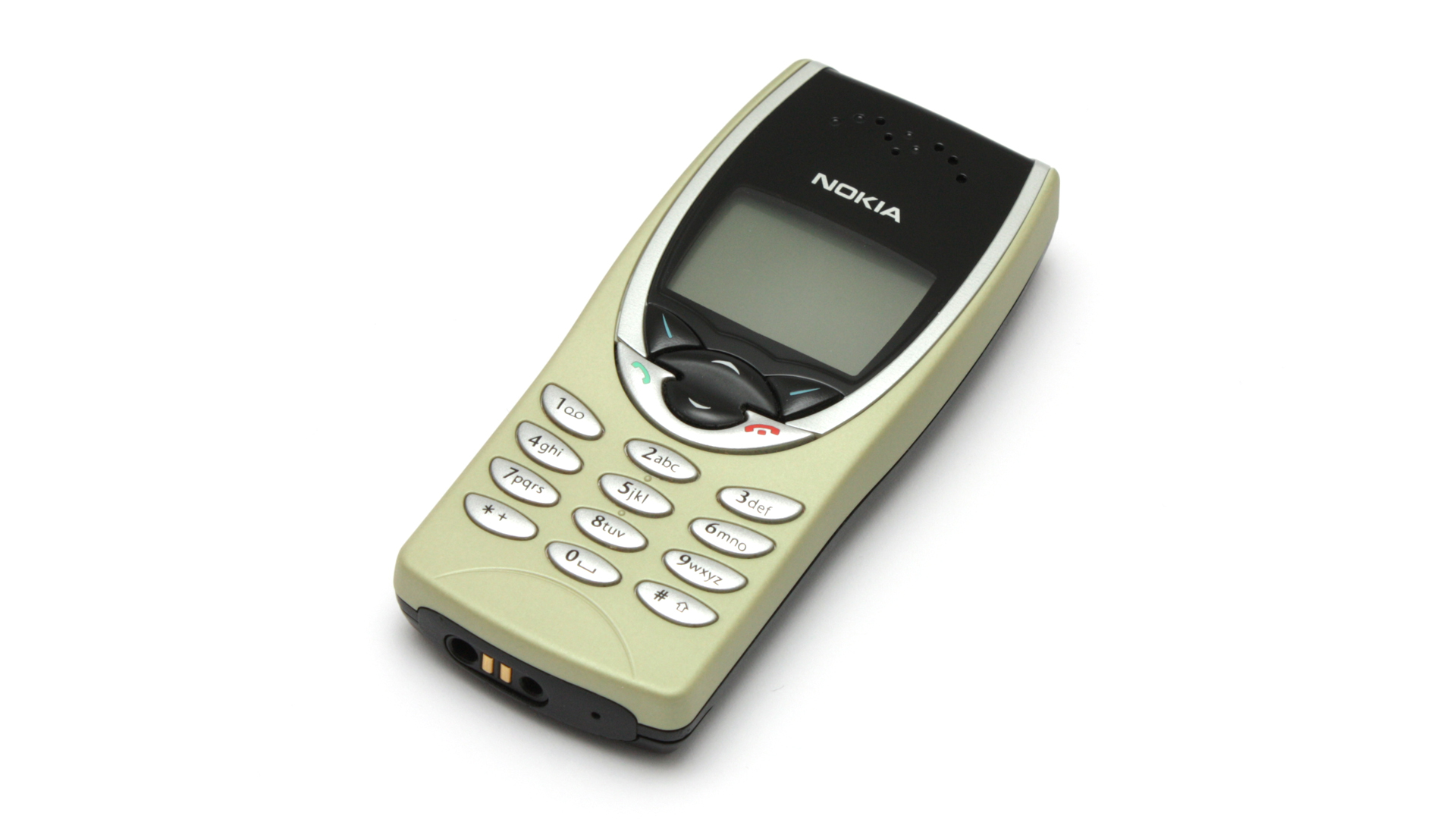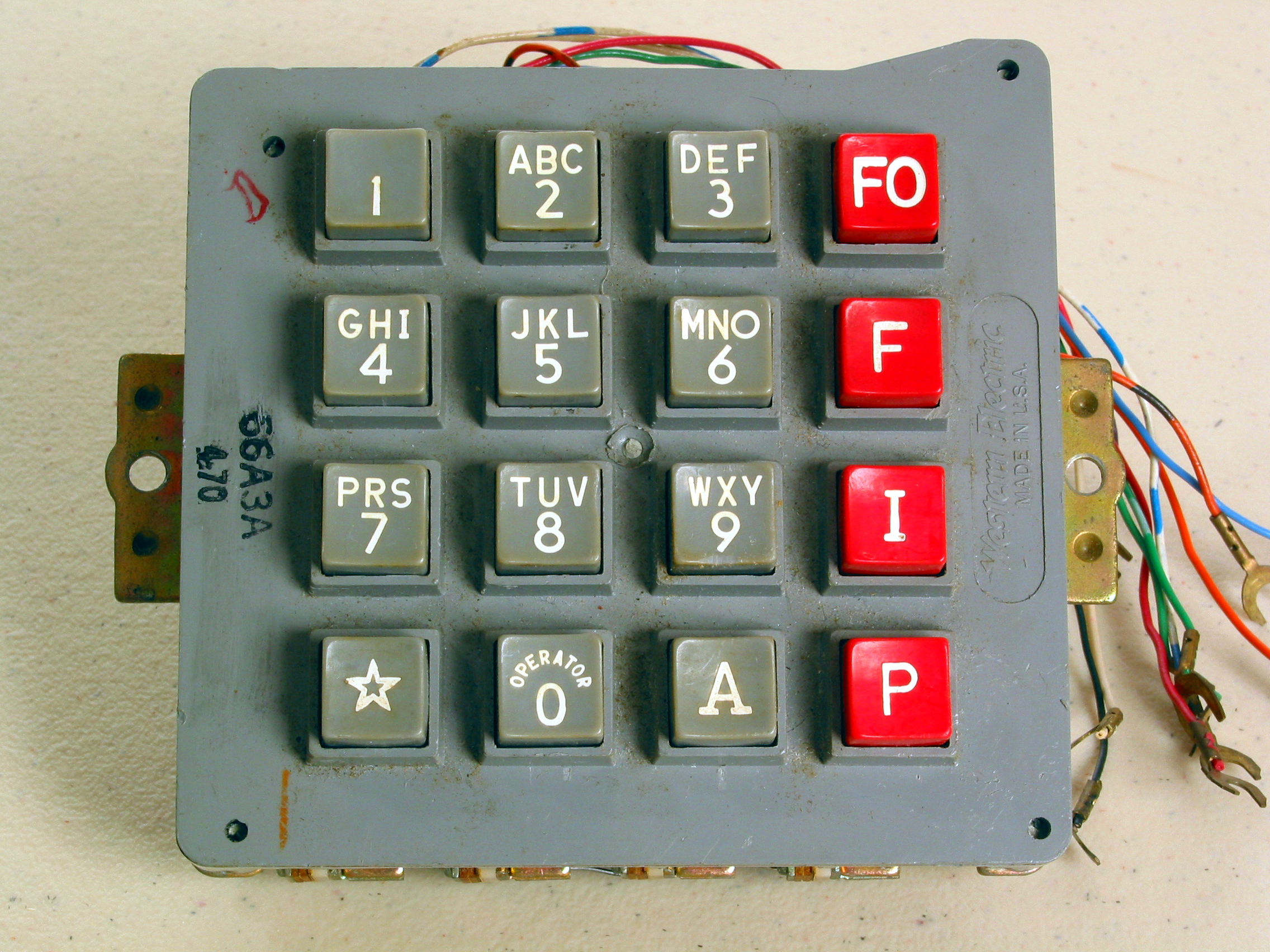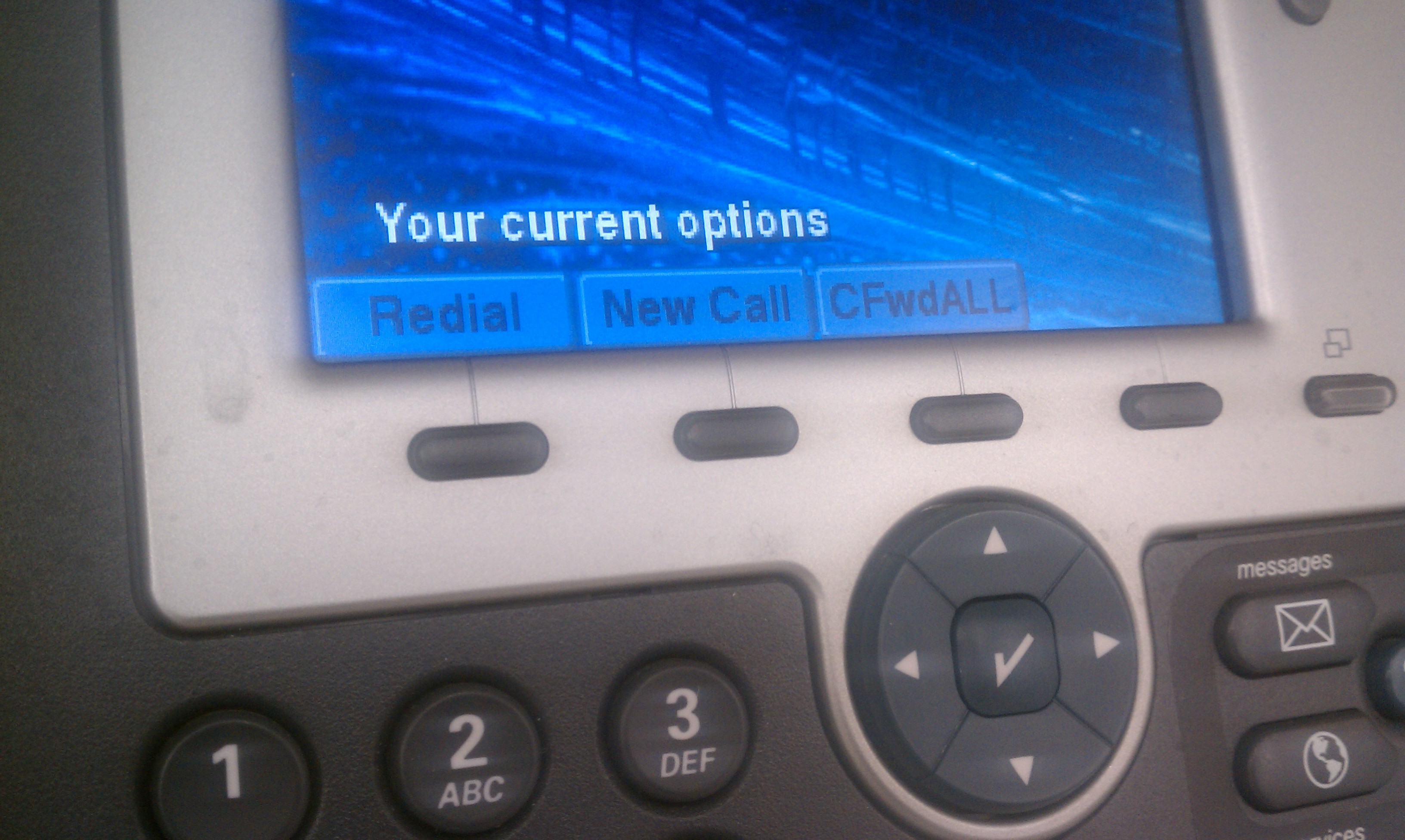|
Nokia 8810
The Nokia 8810 is a slider-style mobile phone handset manufactured by Nokia, announced on March 18, 1998. It is most notable as being among the first phones to have an internal antenna. It was designed to be the flagship and the most luxurious of all Nokia phones at the time, and also one of the first phones with chrome plating. Core features Memory The phonebook can store up to 250 names and numbers. Ten text messages can be stored in the internal memory. Contacts can also be stored on the SIM card, which allows the user to keep a backup should they accidentally delete their contacts from the internal phone memory. The phone does not have, however, any external memory options, such as support for a microSD card or Sony memory card. Calls The call history of the 8810 stores 30 previous calls: 10 dialed, 10 received, and 10 missed. There are 35 preloaded monophonic ringtones on the phone and additional ringtones were available for download at a cost. The phone features the abili ... [...More Info...] [...Related Items...] OR: [Wikipedia] [Google] [Baidu] |
Nokia
Nokia Corporation (natively Nokia Oyj, referred to as Nokia) is a Finnish multinational corporation, multinational telecommunications industry, telecommunications, technology company, information technology, and consumer electronics corporation, established in 1865. Nokia's main headquarters are in Espoo, Finland, in the greater Helsinki Greater Helsinki, metropolitan area, but the company's actual roots are in the Tampere region of Pirkanmaa.HS: Nokian juuret ovat Tammerkosken rannalla (in Finnish) In 2020, Nokia employed approximately 92,000 people across over 100 countries, did business in more than 130 countries, and reported annual revenues of around €23 billion. Nokia is a public limited company listed on the Helsinki Stock Exchange and New York Stock Exchange. [...More Info...] [...Related Items...] OR: [Wikipedia] [Google] [Baidu] |
Nokia 8110
Nokia 8110 is a mobile phone released in 1996. It was announced on 9 September 1996, as the first of Nokia's high-end ''8000'' series of phones. Its distinctive styling was the first example of a 'slider' form factor. A sliding cover protected the keypad when being carried in the pocket and extended downwards in use, bringing the microphone closer to the mouth. The action of opening the cover also answered an incoming call. The prominent curvature of the case, particularly when open, earned it the nickname "banana phone". It was also the first Nokia phone with monochrome graphic LCD. The phone was designed for the business market and was one of the smallest and lightest (152 grams) phones on the market, but still had better battery life than its predecessor Nokia 2110. The improved 8110i model, announced in March 1997, was the first phone with the SSMS (Smart SMS) engine. The handsets could be updated OTA (Over The Air) with an intelligent menu structure, which allowed simple inf ... [...More Info...] [...Related Items...] OR: [Wikipedia] [Google] [Baidu] |
Nokia 8210
Nokia 8210 is a mobile phone by Nokia, announced on 8 October 1999 in Paris. At the time, it was the smallest, lightest Nokia mobile phone on the market, thus its selling point was based on its design and customization, with removable Xpress-on covers. Six differently coloured Xpress-on covers are available, as well as many third-party ones. Nokia 8210 uses the GSM 900/1800 band, supports the Extended GSM 900 band (EGSM), and can automatically switch between bands. Specifications Design The phone weighs 79 g (with a lithium battery) and is 101.5 mm long, 44.5 mm wide and 17.4 mm thick. It has a green frontlit monochrome display (the keypad is also illuminated green). The volume has ten levels, and is controlled via a grey button on the top left side of the phone. The base of the phone contains the charger and headset connector. Call management The phone has a speed dial feature, in which the user can assign a name to each key on the keypad (except key 1, whic ... [...More Info...] [...Related Items...] OR: [Wikipedia] [Google] [Baidu] |
Nokia 8850/8890
The Nokia 8850 is a mobile phone handset manufactured by Nokia. It was a light alloy-bodied enhanced version of Nokia 8210 model with slider protection of the keypad and white lighting of the keypad and screen. The 8850 is considered to be an un-repairable phone, thus resulting in very few active handsets in the market. Today it remains a collector's item. It also came in gold. It was introduced as a successor of an earlier model, the chrome phone Nokia 8810. It was succeeded by the Nokia 8910, which was released in 2002. Memory The phone's memory can store up to 250 names and 50 calendar notes. SMS messages can only be stored on the SIM card. Call management The phone has a speed dial feature in which the user can assign a name to 8 of the keys of the keypad. Voice dialing can also be used by assigning up to 8 voice tags to names. Dialed, received and missed calls are all logged. Contacts can be added to one of five groups that can have different logos and ringtones. Messag ... [...More Info...] [...Related Items...] OR: [Wikipedia] [Google] [Baidu] |
Chrome Plating
Chrome plating (less commonly chromium plating) is a technique of electroplating a thin layer of chromium onto a metal object. A chrome-plated item is called ''chrome''. The chromed layer can be decorative, provide corrosion resistance, ease of cleaning, or increase surface hardness. Sometimes, a less expensive imitator of chrome may be used for aesthetic purposes. Process Chrome plating a component typically includes these stages: * Degreasing to remove heavy soiling * Manual cleaning to remove all residual traces of dirt and surface impurities * Various pretreatments depending on the substrate * Placement into the chrome plating vat, where it is allowed to warm to solution temperature * Application of plating current for the required time to attain the desired thickness There are many variations to this process, depending on the type of substrate being plated. Different substrates need different etching solutions, such as hydrochloric, hydrofluoric, and sulfuric acids. ... [...More Info...] [...Related Items...] OR: [Wikipedia] [Google] [Baidu] |
Dual-tone Multi-frequency Signaling
Dual-tone multi-frequency signaling (DTMF) is a telecommunication signaling system using the voice-frequency band over telephone lines between telephone equipment and other communications devices and switching centers. DTMF was first developed in the Bell System in the United States, and became known under the trademark Touch-Tone for use in push-button telephones supplied to telephone customers, starting in 1963. DTMF is standardized as ITU-T Recommendation Q.23. It is also known in the UK as ''MF4''. The Touch-Tone system using a telephone keypad gradually replaced the use of rotary dial and has become the industry standard for landline and mobile service. Other multi-frequency systems are used for internal signaling within the telephone network. Multifrequency signaling Before the development of DTMF, telephone numbers were dialed by users with a loop-disconnect (LD) signaling, more commonly known as pulse dialing (dial pulse, DP) in the United States. It functions by int ... [...More Info...] [...Related Items...] OR: [Wikipedia] [Google] [Baidu] |
Soft Key
A soft key is a button flexibly programmable to invoke any of a number of functions rather than being associated with a single fixed function or a fixed set of functions. A softkey often takes the form of a screen-labeled function key located alongside a display device, where the button invokes a function described by the text at that moment shown adjacent to the button on the display. Soft keys are also found away from the display device, for example on the sides of cellular phones, where they are typically programmed to invoke functions such as PTT, memo, or volume control. Function keys on keyboards are a form of soft key. In contrast, a hard key is a key with dedicated function such as the keys on a number keypad. Screen-labeled function keys are today most commonly found in kiosk applications, such as automated teller machines and gas pumps. Screen-label function keys date to aviation applications in the late 1960s. Kiosk applications were particularly common in the 1990s a ... [...More Info...] [...Related Items...] OR: [Wikipedia] [Google] [Baidu] |
T9 (predictive Text)
T9 is a predictive text technology for mobile phones (specifically those that contain a Telephone keypad, 3×4 numeric keypad), originally developed by Tegic, Tegic Communications, now part of Nuance Communications. T9 stands for ''Text on 9 keys.'' T9 was used on phones from Verizon (mobile network), Verizon, NEC, Nokia, Samsung Electronics, Siemens, Sony Mobile, Sanyo, SAGEM and others, as well as Personal digital assistant, PDAs such as Avigo during the late 1990s. The main competing technologies include iTap created by Motorola Mobile Devices, Motorola, SureType created by Research In Motion, RIM, Eatoni's LetterWise and WordWise, and Intelab's Tauto. T9 is not available on Apple devices but is available on certain inexpensive phones without a touchscreen, and modern Android (operating system), Android phones where it can be used to dial contacts by spelling the name of the contact one is trying to call. The technology was protected by multiple US patents, but they have sin ... [...More Info...] [...Related Items...] OR: [Wikipedia] [Google] [Baidu] |
Lithium-ion Battery
A lithium-ion or Li-ion battery is a type of rechargeable battery which uses the reversible reduction of lithium ions to store energy. It is the predominant battery type used in portable consumer electronics and electric vehicles. It also sees significant use for grid-scale energy storage and military and aerospace applications. Compared to other rechargeable battery technologies, Li-ion batteries have high energy densities, low self-discharge, and no memory effect (although a small memory effect reported in LFP cells has been traced to poorly made cells). Chemistry, performance, cost and safety characteristics vary across types of lithium-ion batteries. Most commercial Li-ion cells use intercalation compounds as the active materials. The anode or negative electrode is usually graphite, although silicon-carbon is also being increasingly used. Cells can be manufactured to prioritize either energy or power density. Handheld electronics mostly use lithium polymer batteries ... [...More Info...] [...Related Items...] OR: [Wikipedia] [Google] [Baidu] |
Snake (video Game)
Snake is a sub-genre of action video games where the player maneuvers the end of a growing line, often themed as a snake. The player must keep the snake from colliding with both other obstacles and itself, which gets harder as the snake lengthens. The concept originated in the 1976 two-player arcade video game ''Blockade'' from Gremlin Industries, and the ease of implementation has led to hundreds of versions (some of which have the word ''snake'' or ''worm'' in the title) for many platforms. 1982's ''Tron'' arcade game, based on the film, includes snake gameplay for the single-player Light Cycle segment. After a variant was preloaded on Nokia mobile phones in 1998, there was a resurgence of interest in snake games as it found a larger audience. Gameplay The original ''Blockade'' from 1976 and its many clones are two-player games. Viewed from a top-down perspective, each player controls a "snake" with a fixed starting position and which continually moves forward, growing longer ... [...More Info...] [...Related Items...] OR: [Wikipedia] [Google] [Baidu] |
Carbon Copy (software)
Carbon Copy was "a remote control/communications program" with for-its-day advanced features for remote screen sharing, background file transfer, and "movable chat windows". Overview The ''New York Times'' described it thus: "you can sit at the console of either machine and call up the programs and files stored on the other". ''Computerworld'' called it "a package that mirrors every action a user takes on two connected PCs". Part of its user base was acquired via inclusion as bonus software for a modem that could communicate at "300, 1200 and 2400 baud." Carbon Copy's vendor, Meridian Technology, was acquired by Microcom in early 1988, and accepted tax credits to move software duplication and packaging of ''Carbon Copy'' to Puerto Rico. Meridian had a British subsidiary, also acquired by Microcom. History ''Computerworld'' covered the flow of features and newer releases: 3.0 (1986), 1987, 1989. By 1991, although Version 5.2.2 was still actively marketed, Version 6.0 was release ... [...More Info...] [...Related Items...] OR: [Wikipedia] [Google] [Baidu] |




